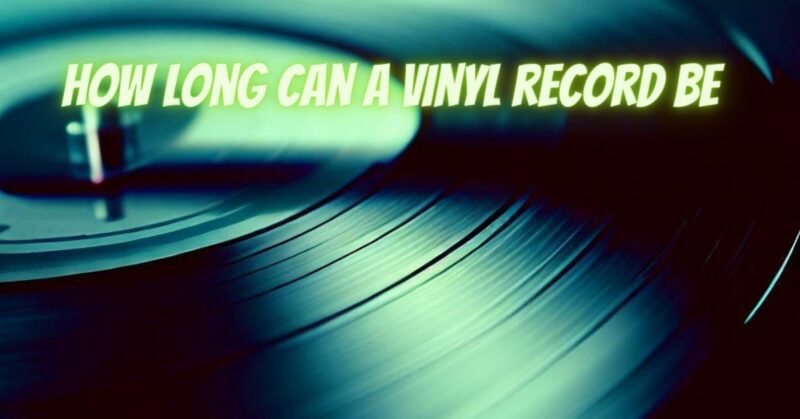Vinyl records have been a popular medium for music playback for many decades. They are known for their warm sound quality and tangible appeal. However, the playing time of a vinyl record is limited due to physical constraints. In this article, we will explore the factors that determine the maximum length of a vinyl record and discuss the practical considerations involved.
Groove Width and Playing Time: The length of a vinyl record is primarily determined by the width of the grooves. To fit more music onto a record, the grooves need to be narrower, allowing for more rotations per inch. Conversely, longer playing times require wider grooves, resulting in fewer rotations per inch. This trade-off between groove width and playing time is a fundamental limitation of vinyl records.
Standard Formats and Playing Times: Vinyl records come in various sizes and formats, each with its own typical playing time limits. Here are some common formats and their associated maximum playing times per side:
- 7-inch Single: Typically holds one song per side. Playing time ranges from two to five minutes per side, depending on the groove width and desired sound quality.
- 10-inch Record: Commonly found in EP (Extended Play) format. Playing time can range from five to 15 minutes per side, again depending on the groove width and sound quality.
- 12-inch LP (Long Play) Record: The most common vinyl format for full albums. Playing time per side can vary between 15 and 30 minutes, although longer playing times are possible with narrower grooves or reduced sound quality.
- Double LPs: When an album exceeds the maximum playing time of a single LP, it may be released as a double LP set. This allows for longer playing times per side while maintaining a high sound quality.
Sound Quality Considerations: As the playing time of a vinyl record increases, there are some compromises that can affect sound quality. Narrower grooves may result in decreased dynamic range and fidelity, as well as increased susceptibility to surface noise, pops, and clicks. Additionally, longer playing times can lead to reduced volume levels toward the inner grooves of the record due to the physical limitations of the medium.
Practical Considerations: While it is technically possible to cut longer playing times onto a vinyl record, there are practical considerations to keep in mind. Exceeding the recommended playing time per side can result in compromised sound quality and increased risk of skipping or distortion. It is generally advised to follow the recommended maximum playing times based on the format and size of the record to ensure the best possible sound reproduction and playback experience.
Conclusion:
The maximum playing time of a vinyl record is determined by the groove width and physical constraints of the medium. Different formats and sizes have typical playing time limits per side, ranging from a few minutes for singles to around 30 minutes for full-length albums. It is important to consider sound quality and practical limitations when determining the length of music to be cut onto a vinyl record. By adhering to the recommended maximum playing times, you can enjoy the unique and immersive listening experience that vinyl records offer.


